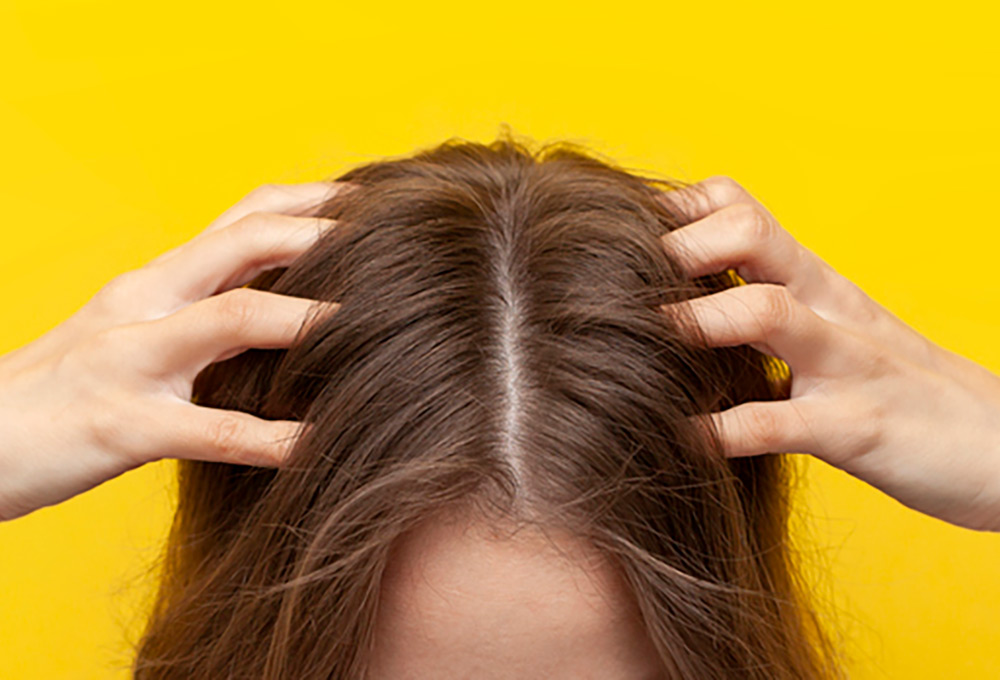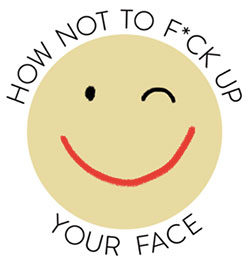By Valerie Monroe
If you’re interested in feeling happier about your appearance—especially as you age—you might like reading what she has to say about it. For more of her philosophical and practical advice, subscribe for free to How Not to F*ck Up Your Face at valeriemonroe.substack.com.
A READER HAS asked a question about a hair issue that hasn’t been on my mind lately—but might be on yours (and is frustratingly on hers): Dandruff.
Q: What should I do with my hair?
A: This question came to me circuitously, as it’s the title of a recent post from Dana Leigh Lyons’s excellent Substack, Sober Soulful. Because she and I have exchanged friendly emails, I offered to try to help her find a solution for her dandruff problem, which she believes is the result of the hard water in her shower.
So I turned to dermatologist and hair-issue guru Hadley King for help.
“Seborrheic dermatitis (dandruff) is a common inflammatory condition of the scalp. It can also appear on the ears, eyebrows, eyelids, and the center of the face,” she said. And if you’re unlucky, the upper chest, upper back, armpits, and groin.
Though what causes dandruff is still somewhat inconclusive, the cause seems to be multifactorial, including your genes, living in a cold and dry climate, stress, your overall health, and a yeast that normally lives happily on your skin. There are other conditions that can increase the odds of a flaky situation: acne, rosacea, psoriasis, Parkinson’s disease, epilepsy, stroke, heart attack, alcoholism, depression, and an eating disorder, said King. Perhaps out of kindness to us, King neglected to include one other potential condition: menopause.
Though dandruff can’t be “cured,” it can be managed with a number of over-the-counter ingredients. The yeast King mentioned above? It goes by the name Malassezia, a Disney villainess who settles into unsuspecting follicles to cause itching and scaling. But these ingredients are useful in decreasing yeast and flaking:
- Selenium sulfide, found in Selsun Blue and Head & Shoulders Clinical Strength shampoos
- Pyrithione zinc, found in most Head & Shoulders shampoos
- Salicylic acid helps reduce scaling on the scalp, found in Neutrogena T/Sal shampoo
- Ketoconazole inhibits fungal growth and is found in Nizoral Anti-Dandruff shampoo
- Coal tar suppresses fungus, decreases inflammation, and may reduce sebum production; it’s found in Neutrogena T/Gel shampoo
- Tea tree oil is antifungal, antibacterial, and anti-inflammatory and is found in Oars + Alps Invigorating Shampoo and Conditioner
Though it might sound counterintuitive, King said washing your hair daily is helpful in controlling yeast and seborrheic dermatitis: Flaking is more the result of the inflammatory condition than the dryness of the scalp. Regarding what Dana thinks is her hard-water issue, she’s right that hard water, with its high mineral content, can be drying or irritating to sensitive skin and can potentially exacerbate seborrheic dermatitis.
Why? (I love when King wanders into the weeds, as she often does.) Because hard water contains high amounts of calcium, so it doesn’t properly dissolve soap, detergent, and other cleansing products—leaving residue on your skin and hair. That residue can dry out and irritate your skin and scalp. As a crappy bonus, it can also make hair dry, rough, dull, and difficult to style. Filtering out the minerals and using gentle sulfate-free cleansers can decrease hard water’s unpleasant effects.
MyLittleBird often includes links to products mentioned. Our editorial choices are made independently; nonetheless, a purchase made through such a link can sometimes result in MyLittleBird receiving a commission on the sale. We are also an Amazon Associate.



thanks! Such a nice, succinct overview of a bothersome problem we all worry about. Love having some of the science behind it.